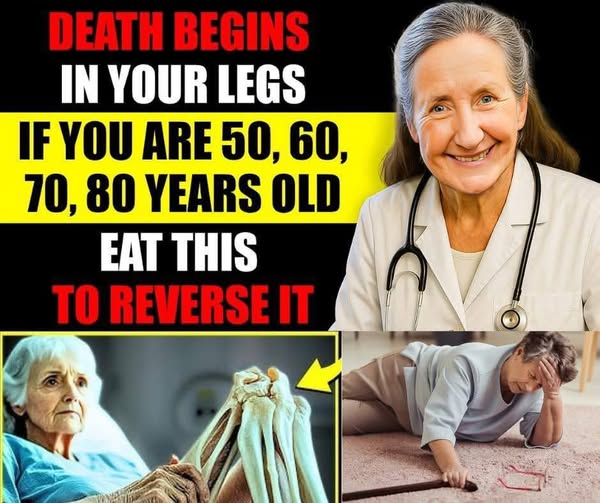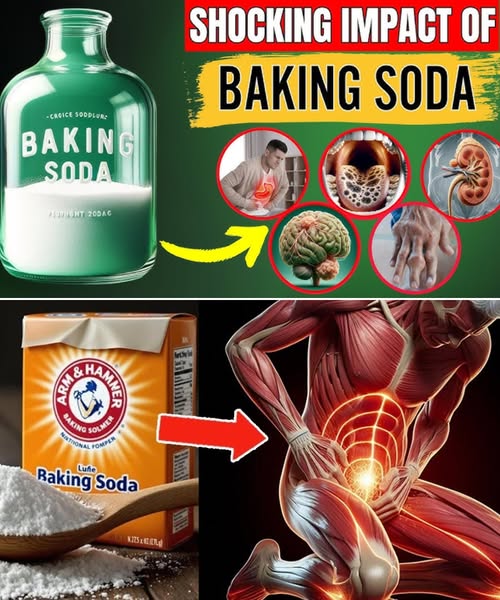Introduction

Feeling unsteady, weak, or less mobile after 55? You’re not alone—and you don’t have to settle for declining leg strength. Imagine walking confidently, climbing stairs with ease, and enjoying your favorite activities without the fear of falling. All it could take is a smart shift in your diet.
In this article, we’ll dive into 7 scientifically-backed foods that can dramatically strengthen weak legs after 55. Plus, we’ll answer common questions, reveal expert tips, and give you immediate, actionable strategies to get moving again—stronger than ever!
Introduction: Why Your Leg Strength Matters More Than Ever After 55
Leg strength isn’t just about fitness—it’s directly linked to independence, balance, and longevity. Studies show that people over 55 with stronger leg muscles are 43% more likely to maintain mobility into their later years.
Unfortunately, after 50, muscle mass naturally declines by about 1-2% per year (a condition called sarcopenia). Without proactive steps, weak legs can lead to serious issues like falls, fractures, and even hospitalization.
The good news? Nutrition can be your secret weapon. Certain foods can accelerate muscle growth, reduce inflammation, and support nerve health, which are all crucial for powerful, steady legs.
Let’s explore 7 supercharged foods that can make a real difference—starting today.
1. Turmeric: The Golden Healer for Inflamed Muscles
Why It Works:
Turmeric contains curcumin, a potent anti-inflammatory compound. Inflammation is a major reason muscles feel stiff, painful, and weak as you age.
The Science:
A 2021 study published in The Journal of Medicinal Food found that daily curcumin intake improved muscle endurance and reduced soreness by 35% in adults over 50.
How to Use It:
- Add ½ teaspoon of turmeric to your morning smoothie.
- Make a golden turmeric tea before bedtime.
- Sprinkle it generously over roasted veggies or soups.
Pro Tip: Combine turmeric with black pepper to enhance curcumin absorption by up to 2000%!
2. Bananas: Nature’s Perfect Electrolyte Booster
Why It Works:
Weak legs often signal potassium deficiency. Potassium is critical for nerve function, muscle contraction, and electrolyte balance.
The Science:
According to the National Institutes of Health, adults over 55 often fail to meet the daily recommended potassium intake of 2,600-3,400 mg. Low potassium leads to muscle cramps, spasms, and fatigue.
How to Use It:
- Enjoy a banana as a post-walk snack.
- Blend bananas into a protein smoothie.
- Freeze banana slices for a refreshing, muscle-friendly treat.
Quick Tip: Pair bananas with a protein source like Greek yogurt for a muscle-building double punch.
3. Red Onions: The Underrated Anti-Inflammatory Powerhouse
Why It Works:
Red onions are loaded with quercetin, a powerful antioxidant and anti-inflammatory agent that helps reduce oxidative stress on aging muscles.
The Science:
Studies from The American Journal of Clinical Nutrition show that quercetin supplementation can enhance muscle recovery and endurance, especially in older adults.
How to Use It:
- Add thinly sliced red onions to salads.
- Roast them with other colorful veggies.
- Incorporate them into your favorite sandwich or wrap.
Taste Boost: Soak sliced red onions in lemon juice for a milder, sweeter flavor that’s easier on sensitive stomachs.
4. Salmon: The Ultimate Protein and Omega-3 Combo
Why It Works:
Salmon offers high-quality protein to rebuild muscle fibers and omega-3 fatty acids that fight inflammation.
The Science:
A meta-analysis from Frontiers in Nutrition revealed that omega-3s can increase muscle protein synthesis by 30%, making salmon a true muscle superhero for those over 55.
How to Use It:
- Grill salmon fillets with a turmeric spice rub.
- Add canned salmon to salads for a quick meal.
- Bake salmon with lemon and dill for a light dinner.
Bonus: Omega-3s also support brain health, sharpening memory and focus!
5. Spinach: A Green Giant for Muscle and Bone Health
Why It Works:
Spinach is a powerhouse of magnesium, iron, and vitamin K—nutrients essential for muscle contractions, oxygen transport, and bone strength.
The Science:
Research published in Nutrients indicates that higher magnesium intake improves leg muscle performance and reduces fall risks by up to 50%.
How to Use It:
- Toss fresh spinach into morning omelets.
- Blend it into smoothies—you won’t even taste it!
- Sauteé lightly with garlic for a simple side dish.
Smart Move: Choose baby spinach for a milder flavor and more tender leaves.
6. Greek Yogurt: Protein-Packed Muscle Fuel
Why It Works:
Protein is crucial after 55 to preserve and build muscle mass. Greek yogurt provides double the protein of regular yogurt, along with gut-friendly probiotics.
The Science:
A study in The American Journal of Clinical Nutrition found that adults over 50 who consumed higher protein dairy products had 25% better muscle retention.
How to Use It:
- Eat Greek yogurt with a drizzle of honey and berries.
- Use it as a creamy base for smoothies.
- Replace sour cream with Greek yogurt in recipes.
Extra Edge: Choose plain, unsweetened versions to avoid added sugars that cause inflammation.
7. Sweet Potatoes: The Energizing Carb Your Muscles Crave
Why It Works:
Carbohydrates are often demonized, but they are vital for muscle energy. Sweet potatoes provide slow-digesting carbs, potassium, and vitamin C for peak performance.
The Science:
Research published in Sports Medicine emphasizes that older adults who consume balanced carbs show greater endurance and reduced muscle fatigue.
How to Use It:
- Bake sweet potatoes with cinnamon and turmeric.
- Mash them with Greek yogurt for extra protein.
- Slice and roast into crispy sweet potato fries.
Quick Hack: Prep a big batch on Sunday for easy muscle-fueling meals all week!
Frequently Asked Questions (FAQs)
Q: Can food alone strengthen my legs after 55?
A: While nutrition is a powerful tool, combining it with resistance exercises, balance training, and adequate hydration maximizes your results.
Q: How long until I notice stronger legs after changing my diet?
A: Many notice improvements in strength and energy within 4–6 weeks, especially when combining dietary changes with exercise.
Q: Are supplements necessary if I eat these foods?
A: In most cases, real food is preferable. However, consult a doctor if you have deficiencies requiring supplementation (especially vitamin D, magnesium, or potassium).
Q: What are signs of weak legs I should watch out for?
A: Common signs include frequent falls, difficulty standing from a chair, wobbly knees, or muscle fatigue after minor activity.
Q: How much protein should I eat daily after 55?
A: Experts recommend around 1.2 to 2.0 grams of protein per kilogram of body weight daily for older adults focusing on muscle strength.
Conclusion: Your Path to Stronger, Healthier Legs Starts Today
Weak legs aren’t inevitable after 55. By embracing these 7 power foods, you can reverse muscle decline, boost your energy, and reclaim your independence.
Every bite matters. Whether it’s a turmeric-spiced smoothie, a banana snack, or a plate of roasted red onions and salmon, you’re fueling your body for success.
Start small, stay consistent, and watch your strength soar.
Today is the perfect day to stand taller, walk stronger, and live freer—one delicious, powerful meal at a time.


